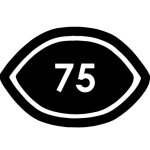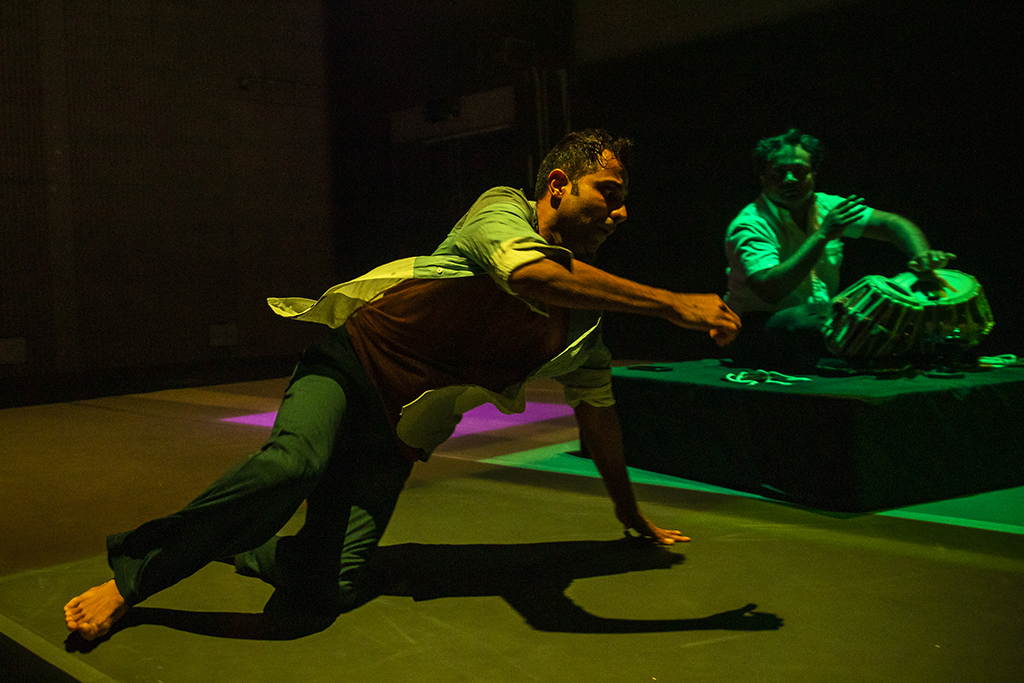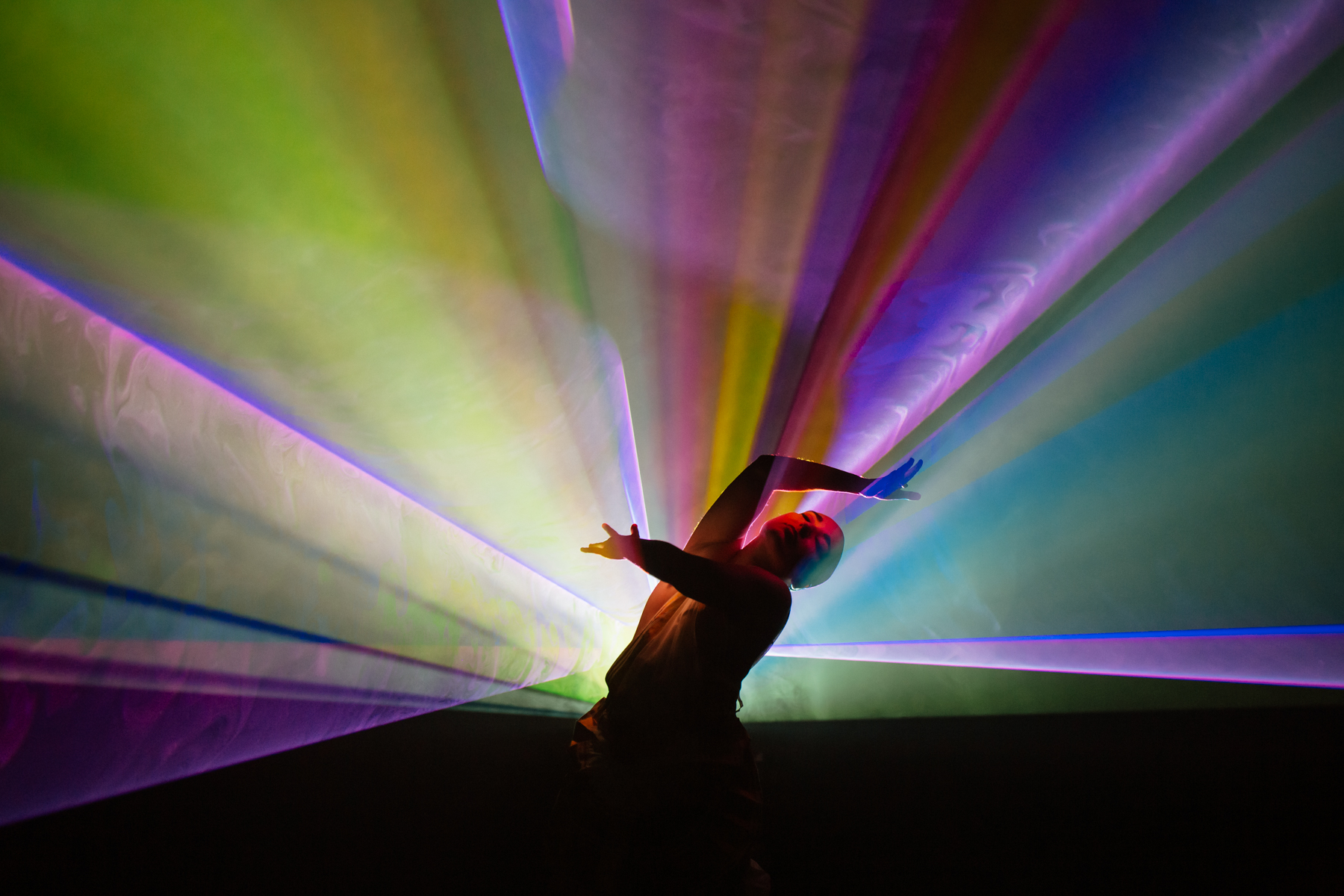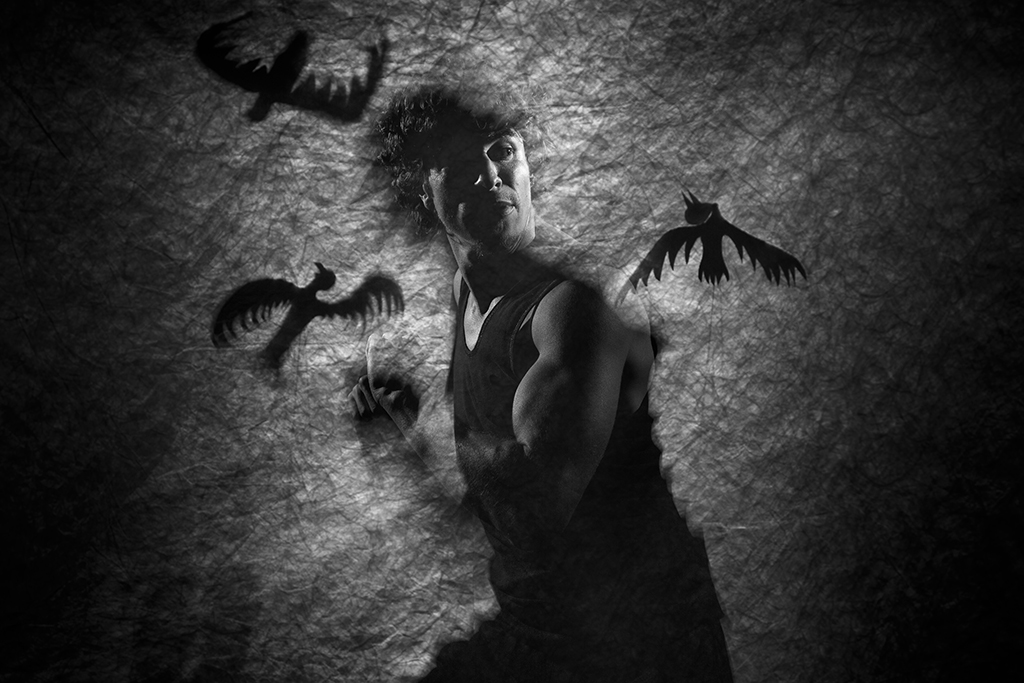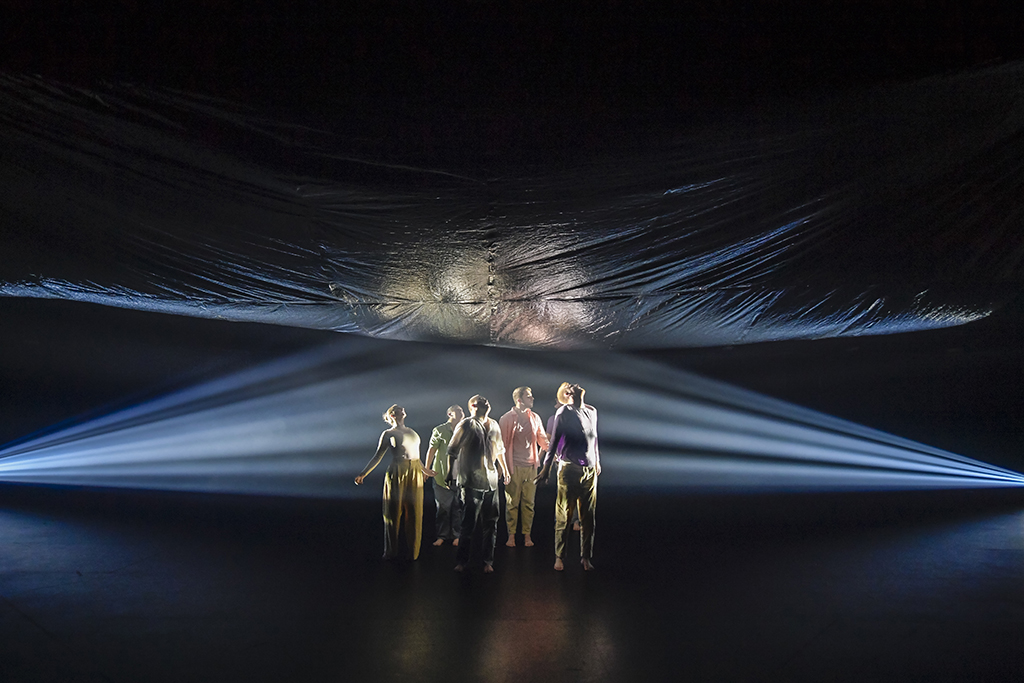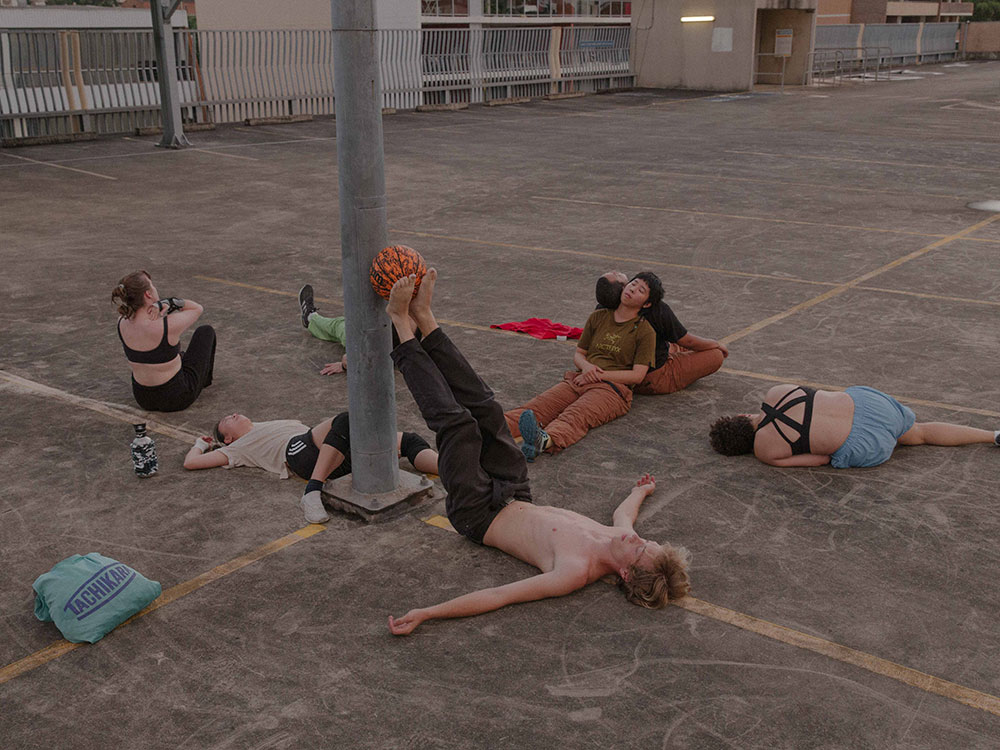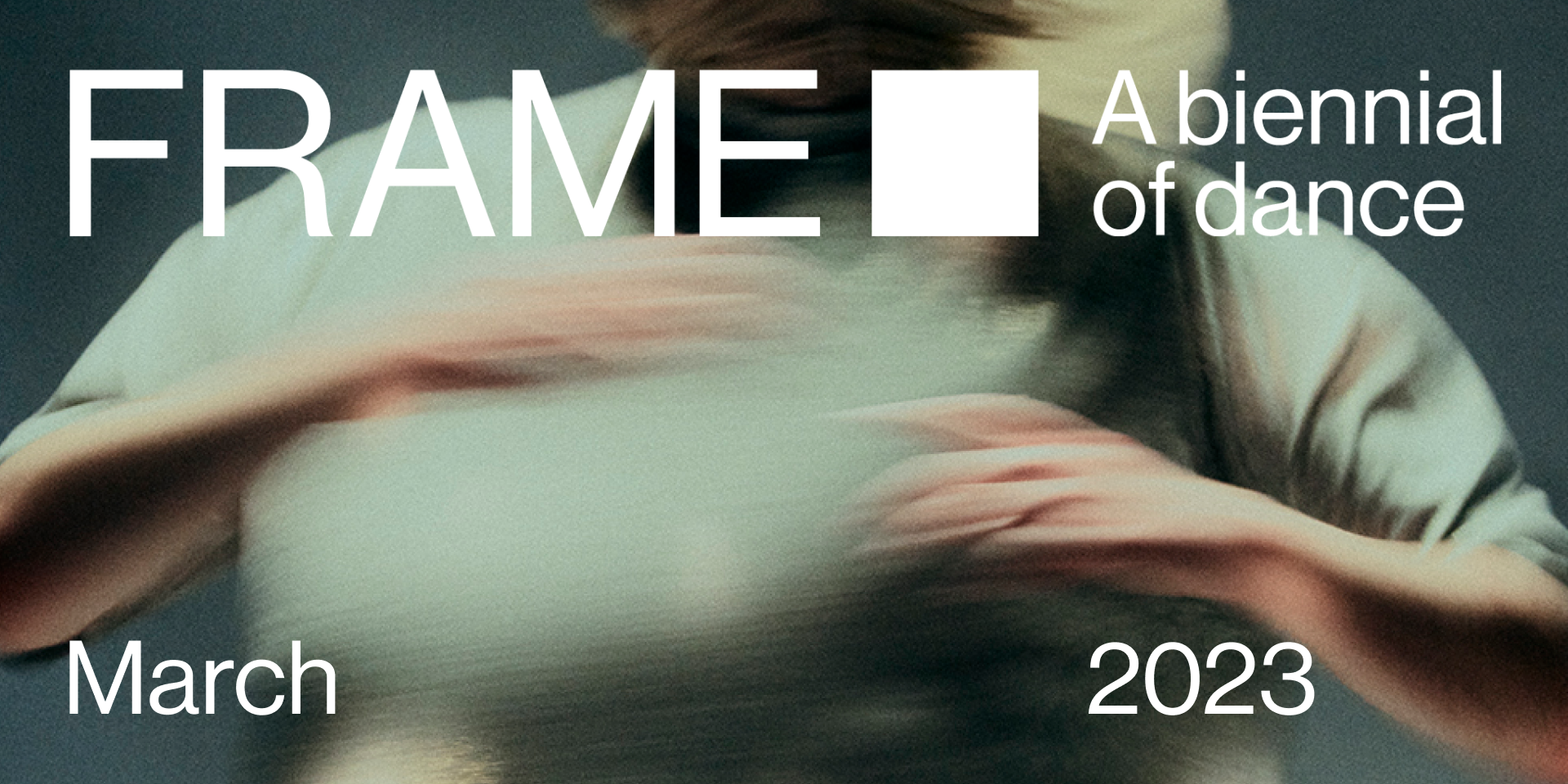Somewhere at the beginning
Germaine Acogny and Mikaël Serre
Presented by Arts House as part of FRAME: A biennial of dance
Wednesday 29 March – Saturday 1 April 2023
Wed – Sat, 7.30pm
65 minutes
Tickets
Standard $35
FRAME Pass $28
Reduced $20
BLAKTIX $10
A small transaction fee will be charged per order.
Warnings
Suitable for ages 16+
Somewhere at the beginning is performed in French with English subtitles
Arts House
North Melbourne Town Hall
521 Queensberry St,
North Melbourne
Germaine Acogny, recipient of the Golden Lion for Lifetime Achievement from La Biennale di Venezia, is considered worldwide the mother of contemporary African dance.
Somewhere at the beginning is a breathtaking, autobiographical solo that is as moving as it is illuminating. The history of one long life crisscrosses its way across continents, intermingling with the histories of Africa and Europe and just as inseparable from either.
Employing text and film, music and movement, Somewhere at the beginning confronts a troubled past while conjuring a vivid portrait of the dynamic present that is West Africa and its diaspora today. It unearths the devastating lived effects of colonial Christianity while also connecting with the suppressed power of her grandmother’s Yoruban spirituality. As Acogny lays waste to patriarchal power structures, new possibilities to forge alternative paths appear, but at each turn this insightful and singular artist is reminded that it is never fully possible to escape your beginnings.
With direction by Mikaël Serre, Somewhere at the beginning is an ambitious and arresting feat of world theatre, connecting audiences with a range of histories and cultures and constructing a dialogue between them.
Don’t miss this rare opportunity to witness one of the world’s most celebrated dancers in this intimate and mesmerising performance.
Artist Statement
I vividly remember a remark that Germaine Acogny made at our first encounter. “My life has often been unsettled. I come from somewhere, but when I try to distance myself I cannot escape from my past. It’s as if I go back to the beginning – the place from whence I come – back to my ancestors and those who accompany me.”
These words speak of an action: the exploration of contrary forces. It is an upward compulsion, but also a gesture of acceptance of the force of destiny. Germaine Acogny told me her story – that of her family and its conflicts, of her host country Senegal , her time of ‘exile’ in Europe and her return to her native Africa. Before we met she told me that in her next work she wanted to think in terms of Greek tragedy. That seemed to me to be most appropriate. When I read the text of a play I hear the moments of ecstasy, doubt and desert crossing. When we met I heard Shango: the god of thunder, lightening and war. I questioned my wish to mix the daunting problems and towering figures of Greek tragedy with the history of Africa. I decided that this project would fulfil the need for a confrontation between the self and the world.
YOU KNOW WHERE YOU WERE BORN, BUT NOT WHERE YOU WILL DIE! (Tiviglititi, the sage, ‘Tales of Aloopho’)
In the course of our discussions Germaine often spoke of her grandmother Aloopho, who was a priestess from Dahomey, mother of the sacred and of strength. By reading the ‘Tales of Aloopho’ I immediately saw the connection between these tragic, archaic and prophetic words and the suffering that suffuses the great female figures in Greek tragedy. The story of Medea is that of each member of the audience who looks inward in search of the self. It is the tragedy of truth. It is the ultimate recognition of the self - of a solitude in confrontation with the world.
ON TRAGEDY...
To take a step back, I cannot help thinking of this saying of Tiviglititi in one of Germaine’s grandmother’s many stories. In the village only the most exceptional of men could become king. They were not born there, but had given evidence of their wisdom elsewhere. What a suggestion when we consider the crises of identity throughout Europe nowadays! Should we not say – as I recently read on a scrap of paper stuck on the wall of the Maxim Gorki Theatre – that identities are a means of transport and not the end of the line? This is also evidenced by the book written by Togoun Servais Acogny – Germaine’s father – which she lent to me to help with my research. It is the moving testimony of a man who from childhood was recommended to deny his past in order to be ‘civilised’ by his contact with Whites. ‘I remember that there were some large copper knives at home. They were there during my childhood, then they disappeared. One day when my father was old and sick I visited him in Paris. Once again I saw those knives – those of my childhood…
...HERE’S TO LIFE!
What Germaine shows through her testimony and her dance, translated into movement, breath, is as if a new start is still possible. It goes through a struggle of the mind against itself, through a revolution capable of designing the inexistent. At a time where the great ideologies no longer manage to provide an identity to the individual, it is essential to continue to offer a dialogue with the intimacy of everyone. It is a testimony on stage in the analysis of breath and movement, a face to face between a loneliness on stage and the intimacy of each spectator.
There were large copper knives at home, I remember, they were there, present at my childhood, and they had disappeared. One day when my father was old and sick and I visited him in Paris, i saw again these knives, those of my childhood ...
Theses knives are mine!
HERE’S TO LIFE!
If a jump ahead were possible it would land amid spiritual turmoil. Germaine represents what almost all of us have become – human beings in transit, exiles, the converted and the reconverted, people who lose themselves and find themselves again. Ultimately identity is not an conclusion but a process. How many Europeans (people?) do not adapt, do not wish to or cannot adapt to this continent (of Africa?) It remains to be seen how we have become what we are and what we want to be in the future. A dialogue between the Occident and Africa is to discover the knot within the body and the sand in the eyes as we confront the narrative of the modern world. Rehearsals began at Toubab Dialaw in Senegal. It was my first encounter with this country and continent. Germaine Acogny introduced me to its history, which I decided to tell in an intimate manner. It is perhaps the only way to avoid all manner of ideologies with their hotch-potch of simplifications.
This passion is also a tenderness that I felt during rehearsals and as I questioned myself whether I had the right to handle Germaine’s personal history, which comprises deficiency and betrayal that echoes general history. It was a journey into the interplay of memory and forgetfulness. Since family history brings back memories of images, odours, feelings and sounds it was essential to work in close collaboration with the video artist Sébastien Dupouey, the lighting specialist Sébastien Michaud and the musician and composer Fabrice Bouillon ‘LaForest’, who used their art to create a dialogue between the past and the present. Naturally one speaks of wounds on the stage, but also of how we as artists to a certain extent can, each in our individual way, bring about an assuagement without effacing the past. Giving this story a materiality is to challenge the act of forgetting without acrimony and to mourn our structuring myths, whether recycled or still alive.
Mikaël Serre, May 2015
About the artists
Dancer, Choreographer, Teacher Dakar/Senegal
Senegalese and French, Germaine Acogny has evolved her own technique of Modern African Dance and is considered worldwide as the “mother of Contemporary African Dance”. From 1977 to 1982, she was the Artistic Director of Mudra Afrique, created by Maurice Bejart and the President L.S. Senghor in Dakar. She dances, choreographs and teaches all over the world and has become a forceful ambassador of African Dance and Culture. In 1997, Germaine Acogny was appointed Artistic Director of the Dance section of Afrique en Creation in Paris. With her husband Helmut Vogt, she created in Senegal the International Centre for Traditional and Contemporary African Dance, the Ecole des Sables, inaugurated in 2004. It’s a place of exchange between African dancers and dancers from all continents. Here dancers from all over Africa receive the rigorous training which guides them towards Contemporary African Dance. Since 1988 Germaine Acogny creates regularly solo pieces for herself and since 2003/2004 she choreographes for her company Jant-Bi which tours successfully all over the world. Germaine Acogny is Chevalier de l’Ordre du Merite, Officier des Arts et Lettres, Chevalier de l’Ordre de la Légion d’Honneur, and Commandeur dans l’Ordre des Arts et des Lettres of the French Republic. She is also Chevalier de l’Ordre National du Lion and Officier des Arts et Lettres of the Republic of Senegal. In 2007, she received, jointly with the Japanese Kota Yamazaki, a BESSIE Award in New York for the choreography of their piece “Fagaala“.
Mikael SERRE
Director, Actor and Translator, Paris / France / Germany
French-German, director, actor, performer, and translator, Mikaël Serre trained at the Beaux-Arts de Saint-Étienne before beginning his career as a photographer and gra-phic designer. He trained in Russia as a director before joining the Ecole Internationale de Théâtre Jacques Lecoq in Paris. In 2000, he performed in Italy and Germany in the creation Il Regno, then in Summerfolk by M. Gorki. He founded the company Theâtre Bathyscaphe and continued his acting career at the Stadttheater in Bremen. As an artist associated with the Ferme du Buisson and then at La Rose des Vents, he made his first productions by choosing texts by contemporary authors or a set script. Trans-cending borders, his work has developed internationally thanks to cross-fertilization with various partners and artistic collaborators around the world, including in France, Germany, Switzerland, Senegal, and Italy. In parallel with his work as a director, Mikaël Serre was theatre coordinator and speaker for the Centre National des Arts du Cirque between 2010 and 2013. In 2010, Ludovic Lagarde invited him to join the artistic col-lective of La Comédie de Reims. His directorial work has been featured at venues such as the Theatre National de Chaillot, Théâtre de la Bastille, and Opéra de Dijon, and he has been invited to numerous festivals including the Theater Pina Bausch Tanz Festi-val in Wuppertal, FIND Festival at Berlin’s Schaubühne, and the famous Maxim Gorki Theater in Berlin. Recent works include SOMEWHERE AT THE BEGINNING (2015) with Germaine Acogny; Song of Solomon (2016), The Tales of Hoffmann (2017), Trois Ombres (2018), La Bohème, Puccini (2019), and coming up in 2020, The Robbers by F. von Schiller and a new creation, Offenbach Report, at the National Opera Nancy.
Patrick ACOGNY
Choreographer, Pedagogue, Dancer France / Senegal
The path of Patrick Acogny is a little unusual in the world of dance. He began dancing at the late age of 23. He trained first in Europe (including Belgium and France) before completing his training in Africa (Mali and Senegal). Fascinated by African dances and the work of his mother Germaine Acogny, he worked as a dancer with Irène Tassembé-do, a former student of Mudra Afrique, and other French contemporary dance compa-nies. In 1995, he was offered the chance to become a choreographer in England where he stayed six years at the direction of one of the biggest black dance companies in the country: Kokuma Dance Theatre.In 2002, he returned to France and he collaborates with many dance schools and teaches master classes in France and abroad. In 2005, Patrick began to teach at the Ecole des Sables of Germaine Acogny and Helmut Vogt in Toubab Dialaw/Senegal. He became assistant artistic director in 2007 and co-artistic director in 2012. With Germaine, he choreographs for the two dance companies Jant-Bi (male and female), gives dance lessons, hosts seminars and coaches dancers and choreographers who were trained at the school. In addition to being an artist, a doer and a transmitter of dance, Patrick also holds two master’s degrees in arts: that of a Middlesex University in London (UK) and the second from the University Paris 8. Patrick has also a PhD of arts, sciences, technologies and aesthetic: performing arts of the University of Paris 8.
Fabrice BOUILLON “LaForest”
Musician, Writer and Composer, Paris / France
Fabrice is a musician writer and composer and a long-time collaborator of Jant-Bi. Under the alias “LaForest”, he produces a unique musical mixture electronics and acoustics, ex-perimental and traditional approaches. His signature is to compose on location, so as to be close to the production teams and local realities.After 3 years as an accompanist for the dance classes of Lyon’s National Conservatory, and with a solid background in video games’ music, he dedicates his work to living arts entirely. He scores many pieces for Laurence Levasseur and the National Circus School of Rosny, Germaine and Patrick Acogny (Jant-Bi), Kota Yamazaki, Jawolle Willa Jo Zollar (Urban BushWomen), Nora Chipaumire & the Pittsburgh’s Dance Alloy Theatre , Sébastien Cormier (Amalgame), Aurélie et Martin Cuvelier (Virevolt), Nita Liem & Bart Deuss (Don’t Hit Mama).In 2003 and 2009 he released two solo albums, among which The Second Birth is a mirror of his experiences in Africa.Writing and composing naturally lead him to directing and staging, first in 2008, co-directing the young audience show Oripeaux (Atelier Bonnetaille), which is still touring. Then Hop Hop Up, a puppet performance by French company Têtempoix. In 2010, he created with the circus artist Damien Droin the company Hors Surface, combining circus and music, poetry and theatre. The duet signs in 2 productions: TETRAKTYS – a Tale of Acropoetics, and BOAT (Transpoetic), now on the road. 2014 saw the birth of his own production: Company Faun.
Sébastien Michaud
Light Designer Paris / France
Sébastien Michaud graduated from the French National Theatre School in 1993. As a close colla-borator of Ludovic Lagarde, he designed the lighting of his plays including Olivier Cadiot’s Colonel des Zouaves in 1999 and Un mage en été in 2010, as well as Peter Verhelst’s Richard III performed at Avignon in 2007. In 2008, he designed the lighting for Pascal Dusapin’s opera Roméo et Juliette and Wolfgang Mitterer’s Massacre, directed by Ludovic Lagarde. He designed with Célie Pauthe the stage setting for Quartett by Heiner Müller in 2003, for L’Igno-rant and Le fou by Thomas Bernhard, for La Fin du commencement by Sean O’Casey at the Co-médie-Française in 2007, and for S’agite et se pavane by Bergman in 2008. He also collaborated with Lucie Berelowitsch for Juillet de Viripaev in 2009, with Aurélia Guillet for La Maison brûlée by Strindberg in 2007, and with Siegrid Alnoy for Rêve d’un homme ridicule by Dostoïevski in 2006.In January 2011, he designed the lighting for La Mouette directed by Mikaël Serre and in Janua-ry 2012 he designed the lighting for Woyzeck, Léonce et Léna and La Mort de Danton by Georg Büchner, directed by Ludovic Lagarde at the Comédie de Reims, and performed at Théâtre de la Ville in 2013. Recently he worked on the lighting for Rappeler Roland by Frédéric Boyer, for Opera show La Voix humaine based on Jean Cocteau and for Lear is in town based on Le Roi Lear by Shakespeare, at Avignon festival. In 2014 he collaborated with composer Frédéric Verrières and director Guillaume Vincent for Mimi - Scènes de la vie de bohème at Les Bouffes du Nord, and worked on other shows like La nuit des Rois, directed by Bérangère Jannelle at Théâtre de La Villen, L’Avare by Molière, directed by Ludovic Lagarde at the Comédie de Reims, Quai Ouest directed by Ludovic Lagarde at the Comédie de Reims. The plays he worked on in 2015 include La bête dans la jungle - La maladie de la mort, directed by Célie Pauthe at Théâtre de la Colline, and Exposition, Boulez at Philhar-monie in Paris.
Sébastien DUPOUEY
Video maker Berlin / Germany
After studying at the Ecole Nationale Supérieure des Arts Décoratifs in Paris, Sébastien Dupouey worked as a graphic designer and musician for the French music scene.Later, he directed music video productions for French television.Since 2005, he designs and develops videos for theater, video installations and films. He has worked with Falk Richter for Cabale et Amour, with Stefan Pucher for Platonov at the Münchner Kammerspiele, for Lars-Ole Walburg’s, Schnee at the Münchner Kam-merspiele, Schwartze Jungfrauen, Christina Paul Hofer, Burgtheater Wien.Since a few years, he began a collaboration with Thomas Ostermeier creating videos for Before Sunrise, The Marriage of Maria Braun, Susn , Hedda Gabler , Hamlet, Cat on a Hot Tin Roof, Othello, Les Démons ...In October 2011, he collaborated with Mikael Serre for L’ impasse, I am What I am, for the Festival Temps d’images at La Ferme du Buisson, scène nationale de Marne-la-vallée and the FIND Festival at the Schaubühne in Berlin in 2012; Children Of The Sun directed by Mikael Serre in 2013. 2013, Children of The Sun, Maxim Gorky, directed Mikaël SerreBiography – Johanna DIAKHATE- RITTMEYER Stylist, Costume Designer, Dakar / SénégalJohanna DIAKHATE-RITTMEYER was born on December 8th, 1945 in Zurich, Switzer-land, in a family that was very open to art and literature. In 1968 she graduated from the Ecole Cantonal des Beaux-Arts in Lausanne with a Fe-deral Certificate of Graphic Designer. Subsequently, in 1973 she obtained her License of Arts from the University of Lausanne, with among others, Art History. From 1968 to 1982, she was actively involved in a collective movement for the renewal of theater and dance in Lausanne, primarily as a costume and set designer. She began a new career in the early 1980’s, mainly specializing in the production of avant-garde fashion design in the French part of Switzerland.Johanna Diakhaté-Rittmeyer continued her career that led her to Dakar, Senegal, where she lives and works as a costume designer since 1991.Johanna Diakhaté-Rittmeyer continued her career that led her to Dakar, Senegal, where she lives and works as a costume designer since 1991.
Credits
Choreography: Germaine Acogny
Assistant Choreography: Patrick Acogny
Set Design: Maciej Fiszer
Costumes: Johanna Diakhate-Rittmeyer
Music composed and performed live: Fabrice Bouillon «LaForest»
Video: Sébastien Dupouey
Lighting Design: Sébastien Michaud
Technical Director: Marco Wehrspann
Text by: Togoun Servais Acogny, Aloopho, Germaine Acogny, Euripides (Medea), adaptation by Mikaël Serre
Production: JANT-BI, Senegal
Supported by
Co-Production: Les Théâtres de la Ville du Luxembourg / Théâtre de la Ville, Paris / Institut Français, Paris Residency and Co-production: La Ferme du Buisson, scène nationale de Marne-la-Vallée Residency: Le Centquatre, Paris. This tour to Australia has been supported by the French Embassy Australie
Presented by Arts House as part of FRAME: A biennial of dance
Wednesday 29 March – Saturday 1 April 2023
Wed – Sat, 7.30pm
65 minutes
Tickets
Standard $35
FRAME Pass $28
Reduced $20
BLAKTIX $10
A small transaction fee will be charged per order.
Warnings
Suitable for ages 16+
Somewhere at the beginning is performed in French with English subtitles
Arts House
North Melbourne Town Hall
521 Queensberry St,
North Melbourne
Image Credit: Thomas Dorn
Image Description: Germaine stands on a stage with a black background. There is a pillow on the ground and feathers are flying in the air. She is bent over the pillow and feathers are flying into her face.



